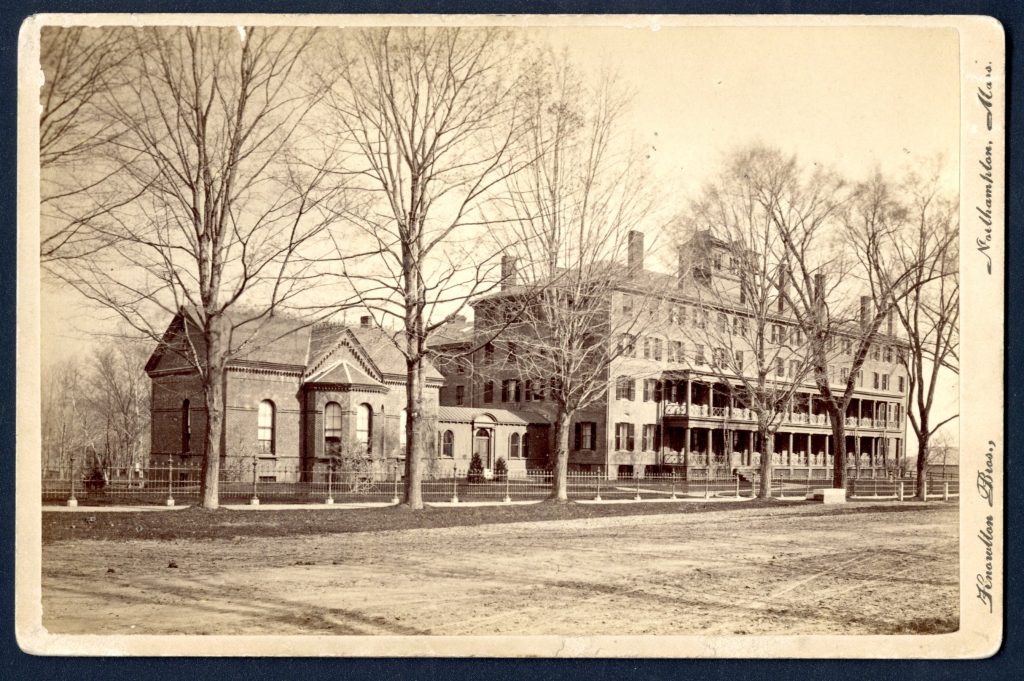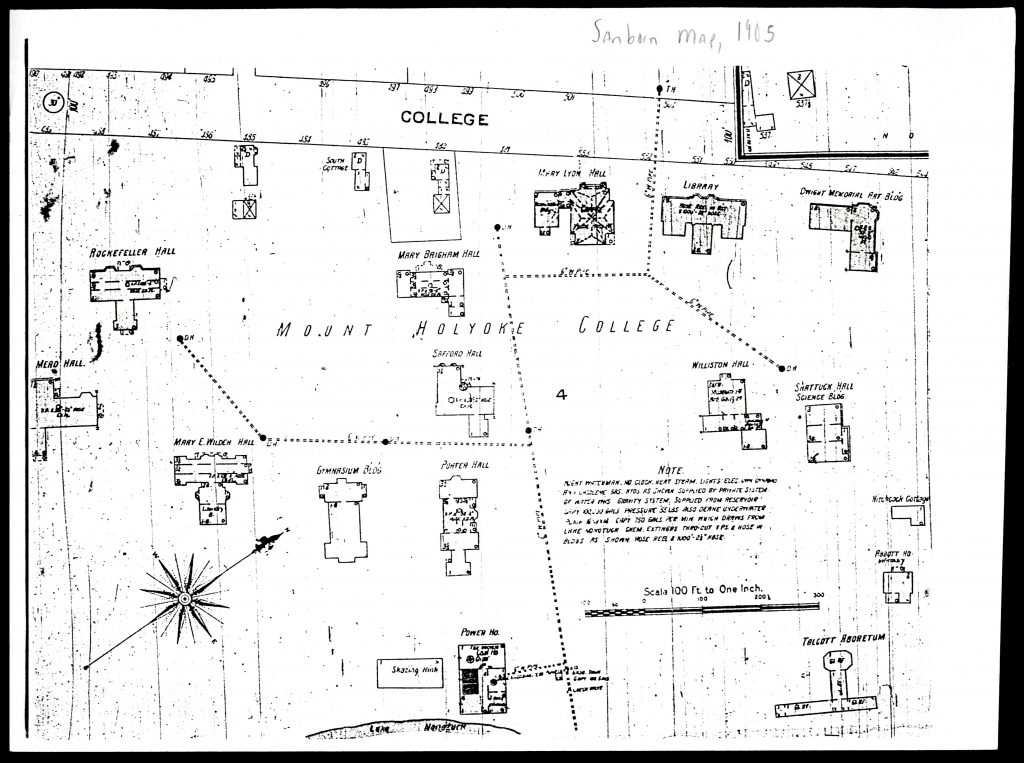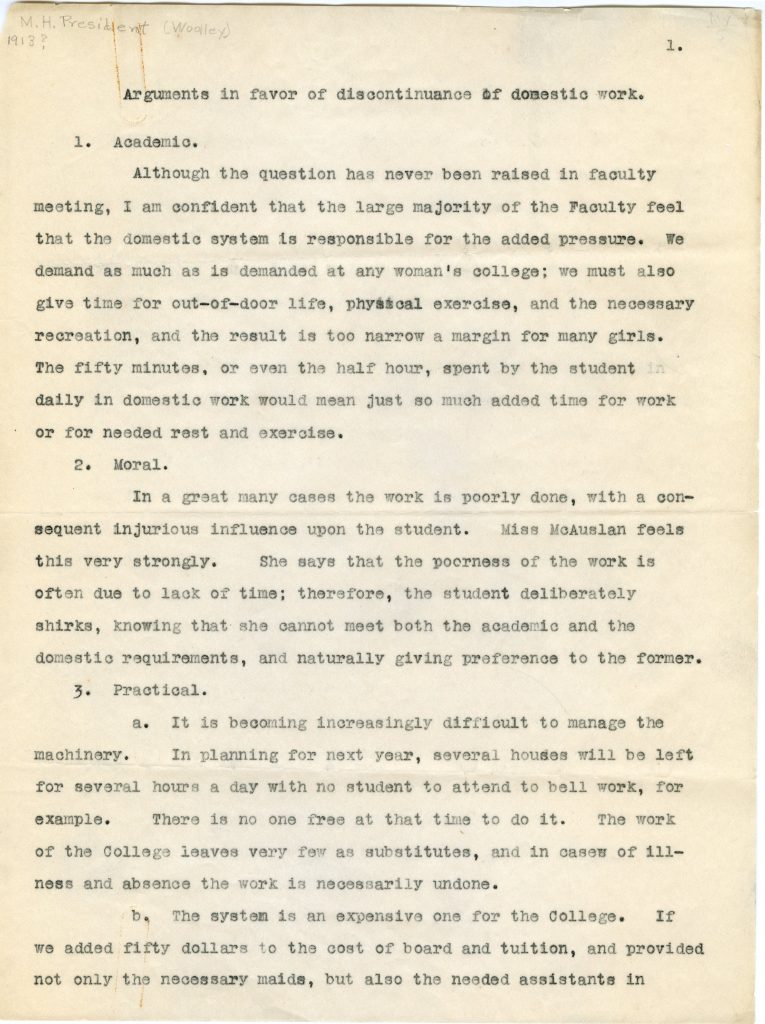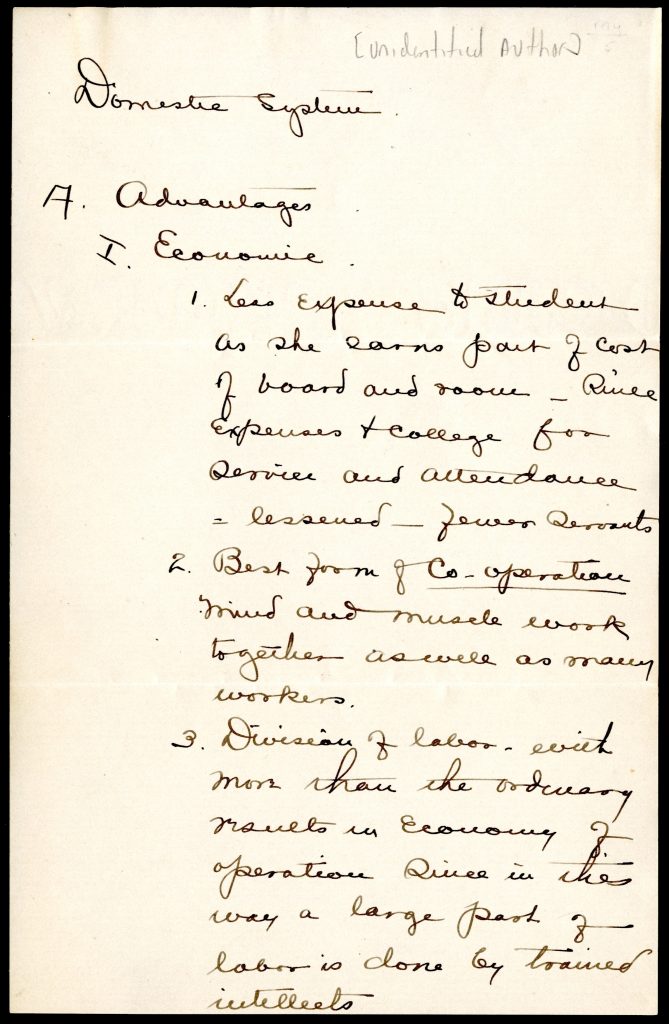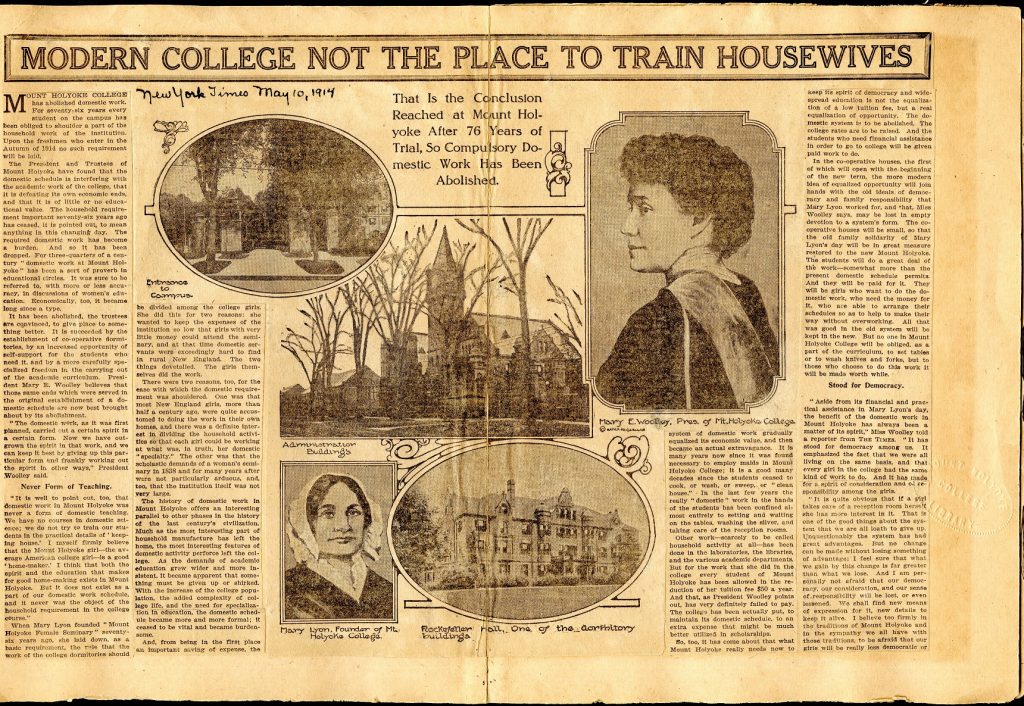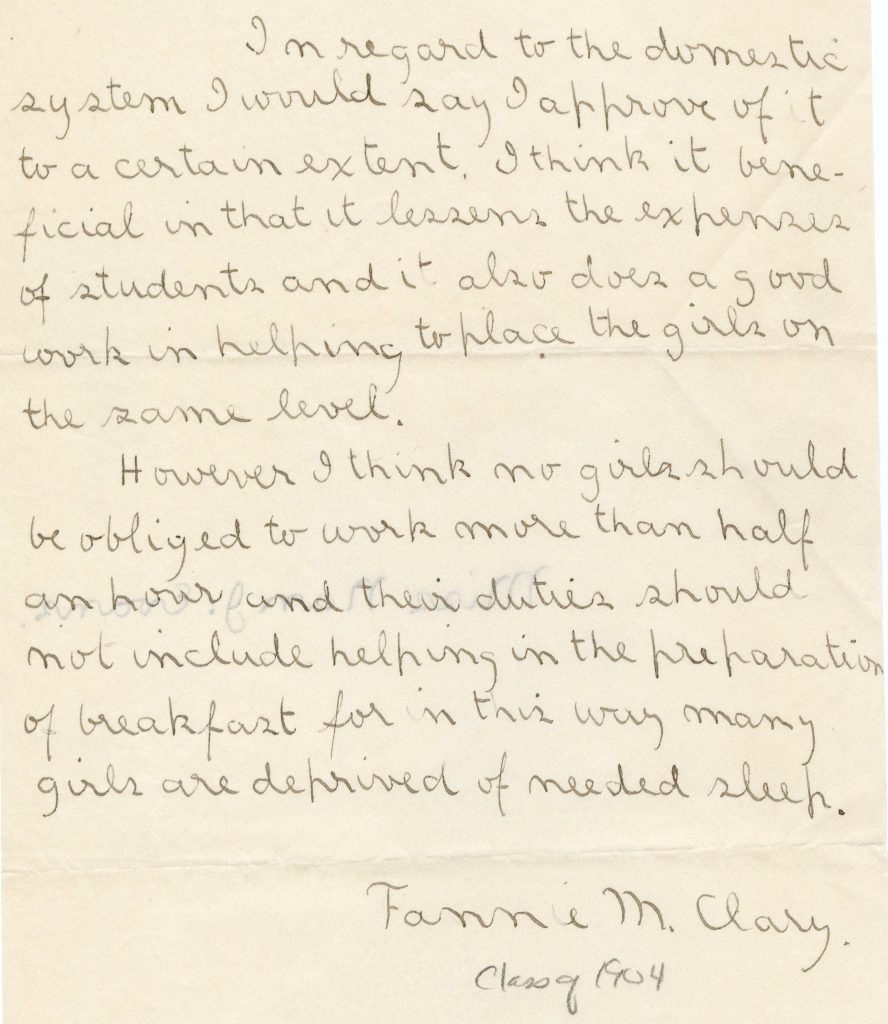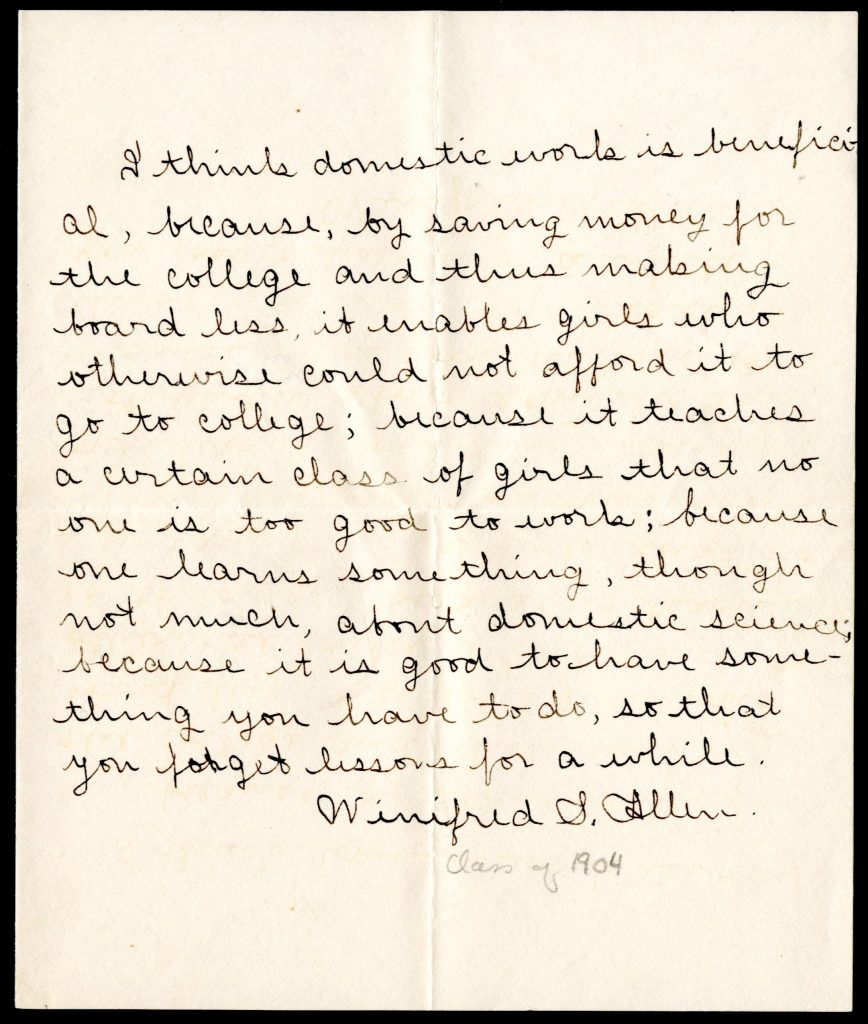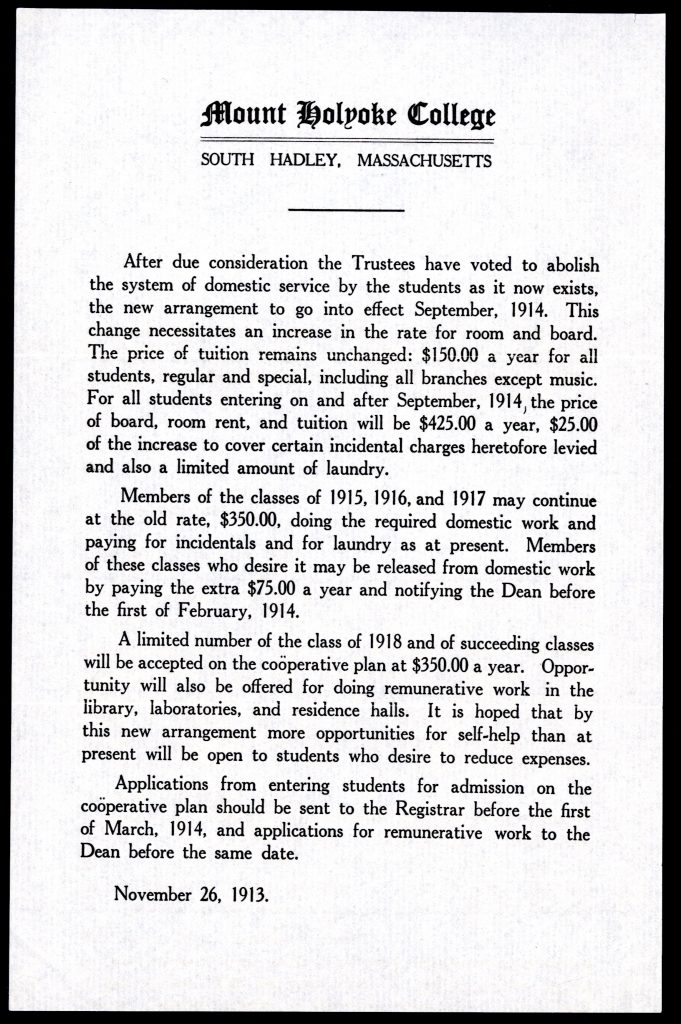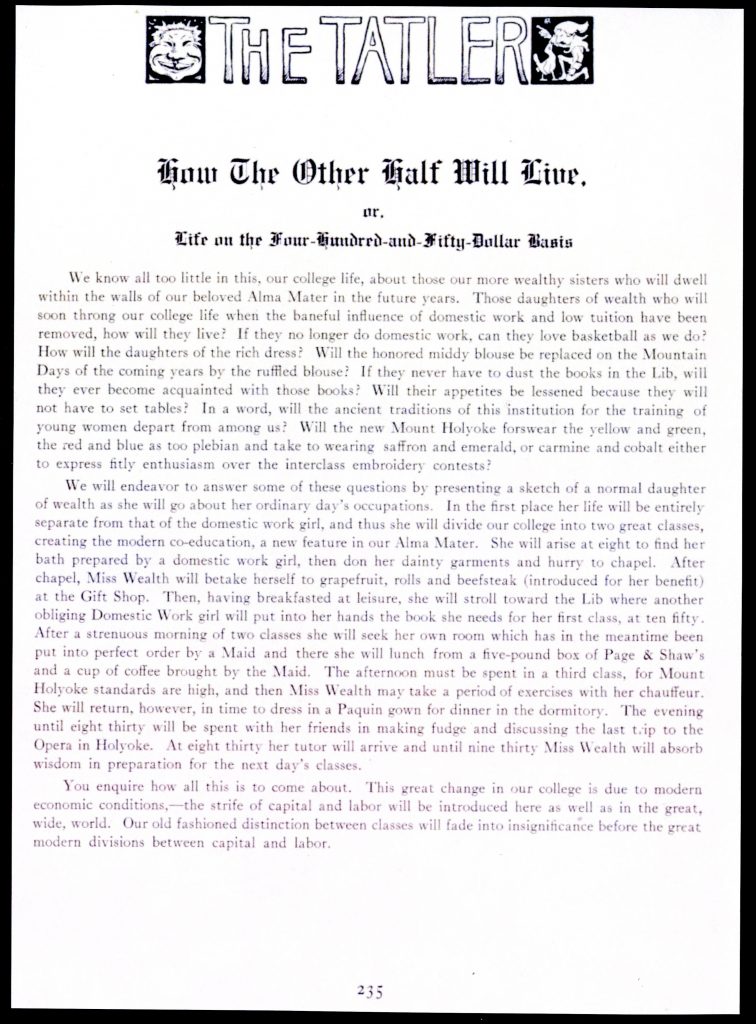After the fire in 1896, which destroyed the Seminary building, the cottage system was instituted. This divided the common purpose of domestic work.
The College became less strict at the turn of the century and clubs began to appear so there were other social opportunities. The College also grew larger, making more work to be done. I became necessary to hire maids so having students perform domestic work didn’t save on expenses significantly or serve the same goals in a larger community.
Students also argued about having to work when other Seven Sisters and male counterparts at Ivy Leagues didn’t have to. Vassar had never instituted domestic work. The others had abandoned it relatively quickly and the last, Wellesley, abolished domestic work in 1897. In fact, at Bryn Mawr, students weren’t even allowed to make their bed for fear any time spent doing domestic work would take away from time studying.
There were articles in the student newspaper as early as 1900 debating the merits of the system though it wasn’t abolished until 1913.
Students, alumnae, and faculty wrote to the Board of Trustees with arguments in favor and against the domestic work system.
“The change has been made in regard to domestic work…Of course, I shall keep our domestic work the same as usual but I do not think I’ll like the place. I fear it will create the feeling of snobbishness and a part of Mt. Holyoke democracy be lost. We’ll be just like every college when that democracy goes.” -Jennie L. Winslow, Class of 1916
“Before domestic work was declared abolished, unanimous was the cry against it. But when we all awoke one fine morning and found that our dream had come true, a large number were fain to sleep again.” – Mount Holyoke News, January 1914
The decision to abolish domestic work was announced in a statement sent out by the Board of Trustees on November 26, 1913. At the beginning of the 1914-1915 school year this change took effect.
Tuition, room, and board were raised to $425 for the class of 1918 while the upper classes continued to have the option of paying the old rate of $350 in addition to working. They could be released from domestic work by paying the extra $75 (roughly $2000 today).
There were concerns about class divide after the abolishment of compulsory domestic work, as seen by the below article in the Llamarada, the school yearbook.
